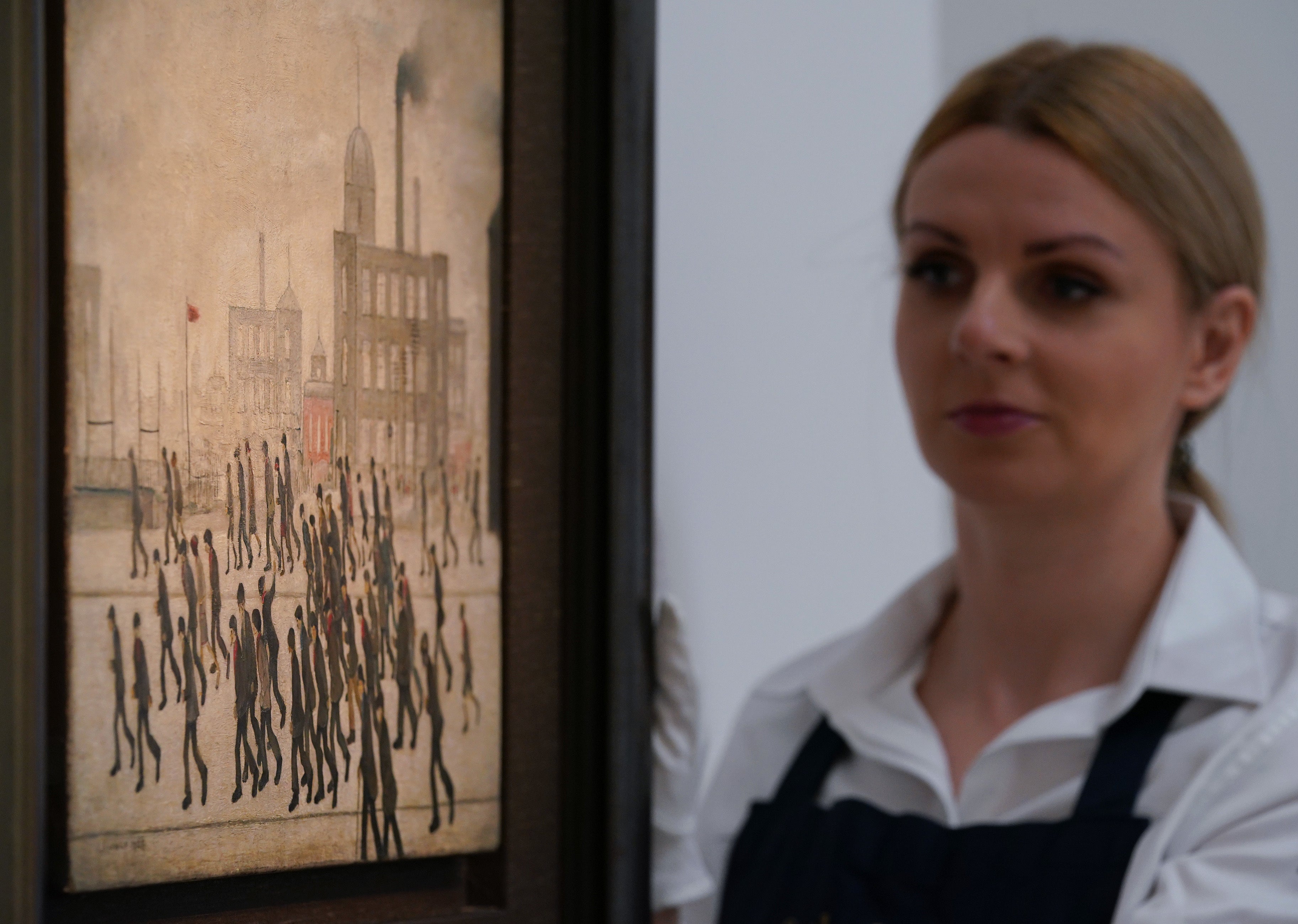Lowry painting should stay free to view given economic climate – Salford mayor
The chief executive of the Lowry gallery said the painting is ‘more of a piece of social history than it is a painting of a football match’.

LS Lowry’s painting Going To The Match should remain in an art gallery free of charge, which will become “all the more important” amid the current economic climate, the mayor of Salford has said.
The artwork, depicting a bustling throng of people gathered at Burnden Park football stadium, former home of Bolton Wanderers, is among a series of paintings going under the hammer at Christie’s modern British and Irish art evening sale on October 19.
Paul Dennett, mayor of Salford, said the new owner of the painting must keep it “free to access” in the city of Salford, greater Manchester and the North.
His comments come after the Bank of England launched an emergency UK Government bond-buying programme on Wednesday, to prevent borrowing costs from spiralling out of control and to stave off a “material risk to UK financial stability”.
Dennett told the PA news agency: “The cost-of-living crisis has really highlighted how difficult things that many people might take for granted these days, so being able to go to an art gallery free of charge is going to become all the more important.
“I also think art, culture and creativity is really important in society and allowing people access to that and giving them the time to enjoy these sorts of things is really important.
“I think this sort of stuff should be embedded within the curriculum within all of our schools, and a critical part of what we do, because we can learn so much by looking at the world through an artist’s lens and reflecting on our history.”
The mayor said ideally he would want the painting to be in public ownership, but it would also be great to see “members of the football community or someone from the Greater Manchester area” purchase it and make sure it is “publicly available and free to access”.
Dennett said the painting speaks to the city’s “social history and heritage”.
“What it really captures is that match day experience, the sociology of football,” he said.
“If you track it from when the painting was painted in 1953 to where we are now with football, we’ve seen the commercialisation of football, but what Lowry captured at that point in time to me is really important.
“The institution of football and how that was embedded within working class communities and how going to the match was very much a community event.
“So retaining that in the city of Salford, free and available to people who visit the city, people who live in the city and people from across Greater Manchester, is really, really important.”
It's more of a piece of social history than it is a painting of a football match
Dennett said the Professional Footballers Association (PFA) had allowed the Lowry museum and gallery to display the painting for 22 years, but were selling it to raise funds for the Player Foundations, the PFA’s charitable arm.
Julia Fawcett, chief executive of the Lowry museum and gallery, told the PA news agency that the gallery was not in a position to buy the painting, which is estimated to fetch up to £8 million.
She said: “Had it been three or four years ago the position might have been different in terms of our ability to fundraise to acquire it and bring it into the public collection, meaning it will be saved forever.
“But fragility for arts organisations at the moment, the timing is so challenging.
“I think it is absolutely our best prospect, in terms of securing it for public displays, really to find somebody who would acquire it, who would have that sense of responsibility like the PFA had, and ensure that it does remain available for the public and it remains free.”
Fawcett added that the painting is “more of a piece of social history than it is a painting of a football match”.
“It is so evocative of Lowry’s work, if you see the painting, there’s probably about a millimetre of the pitch available, the whole of the painting bar that millimetre is depicting the local communities making their way to the match, children, animals, people.”
In 1999, Going To The Match was bought by the Professional Footballers’ Association for £1,926,500 including buyer’s premium at Sotheby’s – a record price at auction for a Lowry and any modern British painting.
Bookmark popover
Removed from bookmarks